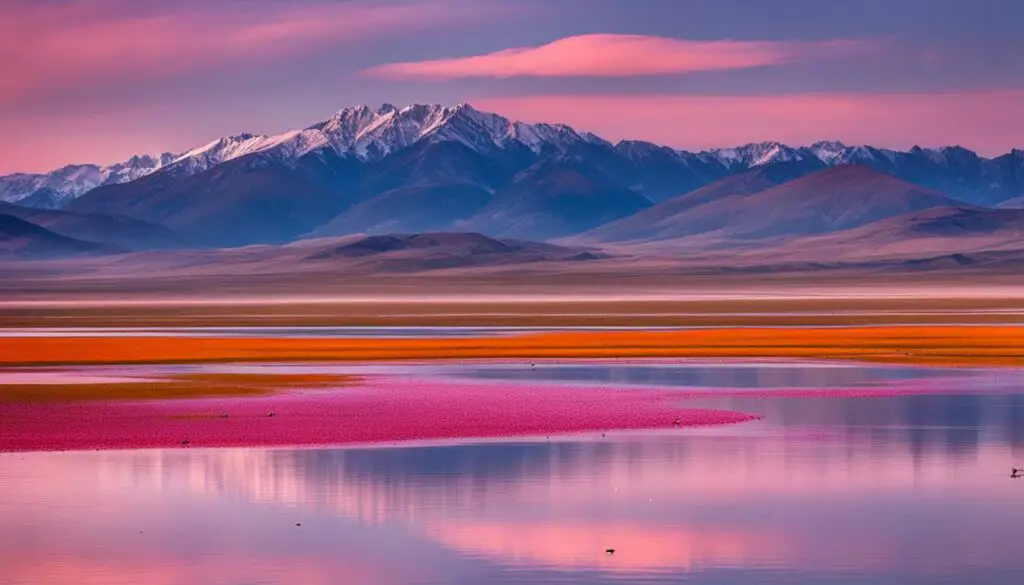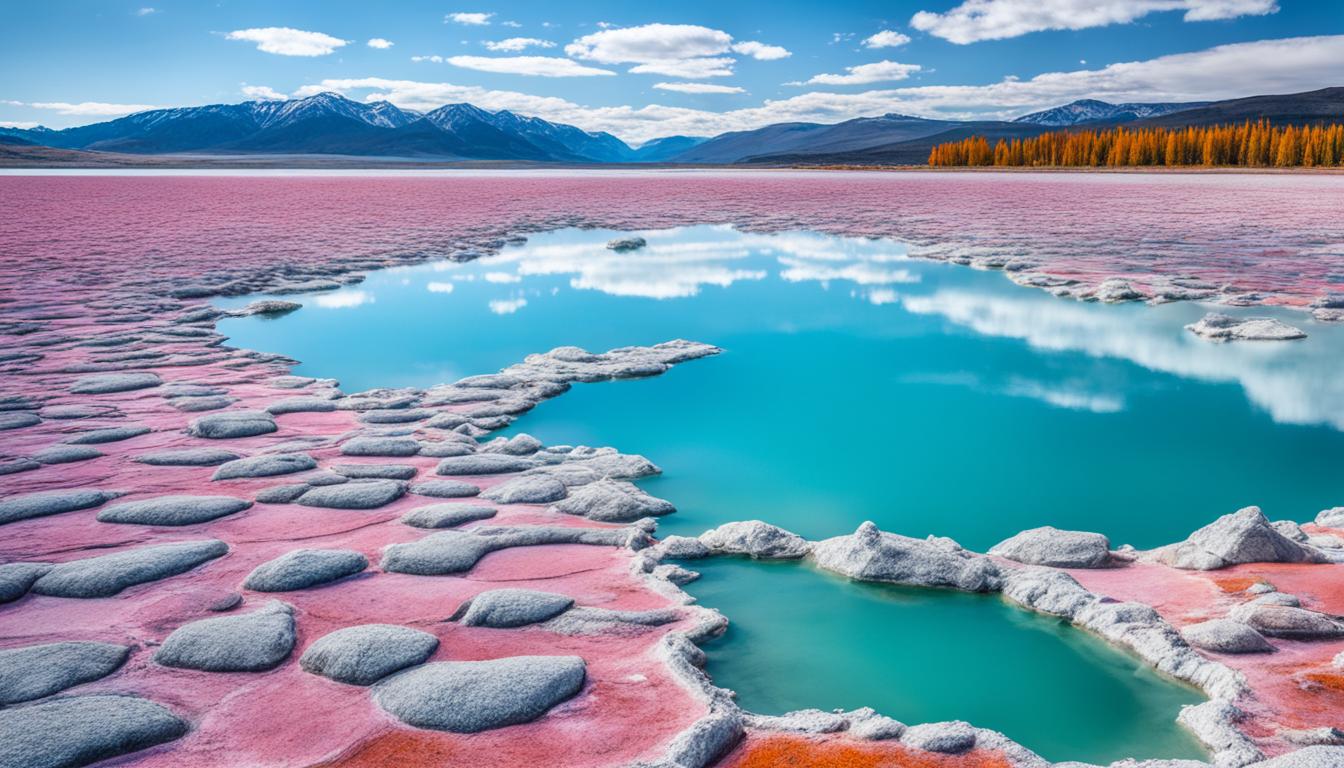Exploring Soda Lake Canada: Cradle of Life
Did you know soda lakes in Canada are important for studying how life started on Earth? These lakes have a lot of soda minerals. They help us see how tiny life forms began in harsh places.
Scientists working on Last Chance Lake in British Columbia have found clues about early life. These clues suggest how life could have begun around 4 billion years ago.
Key Takeaways:
- Soda lakes in Canada are significant for studying the origin of life on Earth.
- Last Chance Lake in British Columbia is a notable site for researching the emergence of life.
- These lakes provide valuable insights into the chemical and physical conditions that supported the development of life.
- Exploring these unique environments helps us understand the biological diversity of extreme habitats.
- Scientific research in soda lakes contributes to our understanding of the origins of microbial life.
Origins of Life in Last Chance Lake, British Columbia
Last Chance Lake in British Columbia, Canada, is fascinating. It’s a soda lake sitting on volcanic rock, which makes it incredibly important for studying how life began. This unique setting is perfect for exploring the early days of life on Earth.
The bio-diverse ecosystem of Last Chance Lake is amazing for research. It lets scientists study how different organisms interact in extreme conditions. The physical and chemical makeup of the lake gives clues about early life conditions, about 4 billion years ago.
One standout fact about the lake is its high phosphate levels. Phosphate is needed for DNA, RNA, and ATP, which are vital for life. The presence of dolomite in the lake also helps increase the amount of phosphorus. This creates the right conditions for life to grow.
These unique conditions may mirror the harsh environments of ancient Earth. Last Chance Lake provides a window to the past, showing how life could start and survive in tough conditions.
The lake is filled with diverse microbes, making it a great place to study tiny life forms. The high salt levels support unique halophilic organisms, adding to the lake’s rich biological tapestry.
Microbes in the lake have a big role in keeping its ecosystem balanced. They help cycle carbon by breaking down organic matter. This process is vital for the lake’s health and balance.
Research at Last Chance Lake continues, unveiling secrets of Earth’s long history. These studies deepen our grasp of life’s beginnings and hint at life’s potential in extreme conditions elsewhere in the universe.

Carbon Cycling and the Significance of Last Chance Lake
Last Chance Lake is vital in the carbon cycle because of its special make-up and life forms. The lake has a lot of phosphate. It also has organisms that love salt. These features help break down organic material. Creatures that can live in salty areas do important jobs. They work with carbon compounds in their daily life. This process helps keep the ecosystem’s carbon in balance. It also adds to the area’s rich variety of life. Understanding soda lakes like Last Chance Lake shows us how extreme spots support life.
| Significance of Last Chance Lake in Carbon Cycling | Contributing Factors | Impact on Biological Diversity |
|---|---|---|
| Facilitates breakdown and assimilation of organic matter | High concentrations of phosphate and halophilic organisms | Contributes to the overall biological diversity of the region |
| Halophilic organisms’ metabolic processes involving carbon compounds | Adapted to high salt concentrations | Helps maintain the balance of carbon in the ecosystem |
Halophilic Organisms and Carbon Cycling
Bacteria and archaea in Last Chance Lake love high salt. They’re key to moving carbon around by using and releasing carbon. These microbes break down carbon, helping the cycle in the ecosystem. This keeps carbon balanced. It also makes sure other life forms have what they need to live. It helps make Last Chance Lake a tough but lively place.

Carbon Cycling and Ecosystem Function
The carbon cycle is key to how Last Chance Lake’s ecosystem works. When salt-loving microbes work on organic material, they release carbon. This carbon feeds other life in the lake. This cycle of carbon supports a wide range of life. Studying soda lakes like Last Chance Lake helps us understand how life manages in harsh places.
Conclusion
The study of soda lakes in Canada, like Last Chance Lake in British Columbia, is really exciting. These special places help scientists learn about life’s start on Earth 4 billion years ago. By looking at life forms, how carbon moves, and where salt-loving organisms live, they learn how life might have begun.
This understanding sheds light on how life started here on Earth. It also hints at life possibly existing elsewhere in the universe. So, take a trip to explore Canada’s soda lakes. You might just unravel the secrets of our world’s early life.
FAQ
What makes Last Chance Lake in British Columbia an ideal environment for studying the origins of life?
How does Last Chance Lake contribute to carbon cycling?
What insights do soda lakes in Canada offer into the origin of life?
Source Links
- https://theboutiqueadventurer.com/national-parks-on-the-east-coast-of-the-united-states/
- https://medium.com/@therandomrealm1/last-chance-lake-in-canada-a-modern-window-into-earths-ancient-cradle-of-life-1ad139cbb9c0
- https://www.accuweather.com/en/weather-news/a-shallow-lake-in-canada-could-point-to-the-origin-of-life-on-earth/1623382








